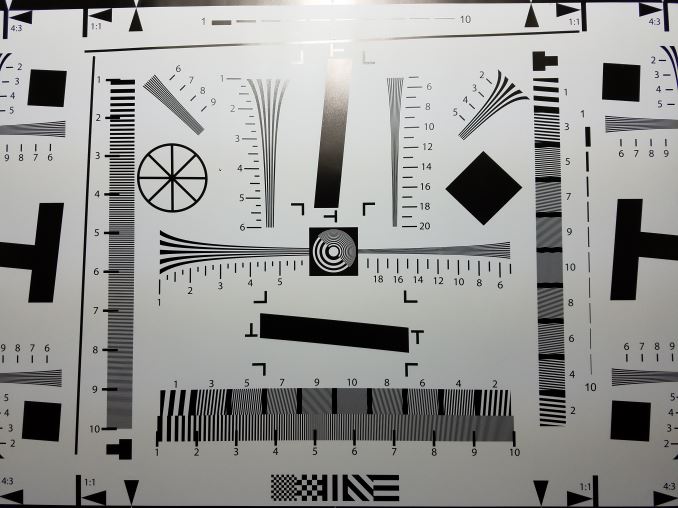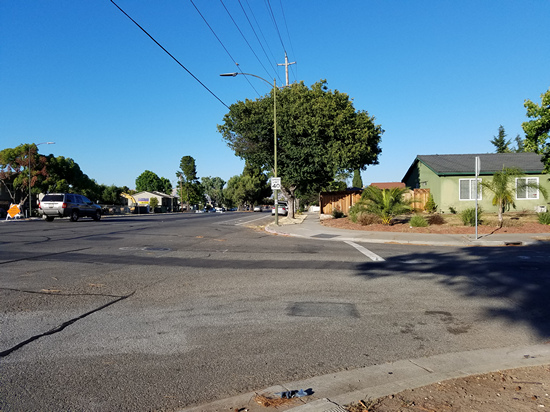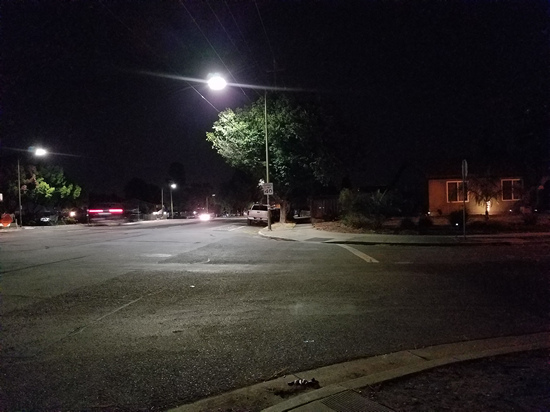The Samsung Galaxy S7 and S7 edge Review: Part 2
by Joshua Ho on July 5, 2016 8:00 AM ESTStill Image Performance
Now that we’ve covered the user experience associated with the camera, we can start to go over the output that the Galaxy S7 is capable of producing. In order to do this we continue to carry over the same sorts of benchmarks that we’ve used in 2015, which is to say that we use a combination of standardized test charts with semi-controlled lighting along with real world testing to try and see how the device actually performs outside of rather simplistic tests.
Starting with the ISO chart we can see quite clearly that the Galaxy S7 has lost noticeable ground in resolution relative to the Galaxy S6 when you look at the center of the photo, but at the edges of the photo the Galaxy S7 actually appears to have the lead against the Galaxy S6. The same sort of story plays out with the HTC 10 as it clearly has more detail than the Galaxy S7 at the center of the photo but the edges of the HTC 10’s test chart shot shows clear defocus that gets pretty terrible at the corners.
| Daytime Photography |
In our daytime landscape test we can see the sorts of effects that the smaller pixel size has had on the Galaxy S7. Relative to the Galaxy S6, there’s almost no delta in the detail resolved, but right away it’s obvious that the sharpening halos have become even more obvious than before which is concerning. These observations also apply to the Galaxy Note5, although the Note5 is a bit sharper due to some changes in image processing relative to the Galaxy S6. However I wouldn’t say that there’s an appreciable difference one way or another here.
Relative to the iPhone 6s, the Galaxy S7 is basically identical in detail as well, but the iPhone 6s tends a bit warmer and has much, much less obvious post-processing that is extremely obvious on the distant trees that contrast against the sky. This is actually kind of surprising for me given that the Galaxy S7 has a larger sensor, but I suspect the dual pixel AF, wider aperture, and slightly wider field of view are eliminating whatever advantages increased sensor size might bring.
Compared to the HTC 10, the Galaxy S7 has better edge contrast, but generally it looks like textures have better detail on the HTC 10. I haven’t been able to do extensive RAW comparisons yet but it looks like HTC is just blurring luminance noise out too aggressively here for whatever reason. I’m not sure what causes this in image processing, but given how other OEMs like LG and Apple are fully capable of mostly eliminating color noise from their photos while retaining most of the detail that their cameras are capturing HTC would do well to do the same.
The final point of comparison I want to make here is the LG G4/G5. Although the G5 seems to have started an AF run in the middle of the capture, the areas where the photo is actually focused are arguably better than what the Galaxy S7 can put out. Even next to the G4, the Galaxy S7 falls short. I’m honestly not sure why LG doesn’t get more credit here, because next to Apple they seem to have the best image processing algorithms in the industry.
| Low Light Photography |
While daytime quality is critical, I suspect most people are going to be interested in low light performance as this is usually the hardest test for any OEM to get through. It’s taken years for OEMs to start shipping acceptable image processing in low light that wasn’t just a smeary and oversharpened mess, so getting this right is pretty important to say the least.
Unfortunately, the Galaxy S7 is just a bit disappointing here. The LG G5 is just clearly better here as noise reduction is better in pretty much every way and it looks a lot more natural due to less obvious sharpening halos. I would also argue that the HTC 10 is also better here due to its better texture detail and better handling of shadow detail, even if edges are softer.
The Galaxy S7 also has this strange streaking light flare with bright sources that I just couldn’t get rid of despite wiping the lens multiple times with a clean cotton cloth, which was done for every phone in this test before taking the picture. In fairness, the Galaxy S7 is still the fastest camera out of everything in this test, but it comes at the cost of rather disappointing output for me. The Galaxy Note5 looks like it might even be slightly better than the Galaxy S7, which is a weird regression when the general idea of going to a larger pixel size is to get better low light performance. As alluded to earlier, the cost of the dual pixel AF system may be sensitivity due to the dual photodiodes and light barrier to generate a phase detection pixel. While this is just one test example I’ve spent a lot of time playing with the camera on the Galaxy S7 and in general its low light performance is fairly similar to what you see above. The only time where I really see the Galaxy S7 lead is in extreme low light conditions where everything is reaching ISO and shutter speed limits.
Overall, while the user experience of the Galaxy S7's camera is industry-leading, the Galaxy S7 represents a somewhat unfortunate sidegrade in camera quality at best. I would argue that Samsung has gone in the wrong direction with their camera processing as they seem to be relying on strong noise reduction and sharpening more than ever before. The Galaxy S7 also retains the oversaturated color rendering of the Galaxy S6. While I'm sure most people are happy with these results, Apple and LG tend to have more accurate color rendition with their cameras. While HTC doesn't quite nail color rendition, they are arguably closer to reality than Samsung is. Hopefully with their next device they manage to maintain their class-leading speed, but with better post-processing and overall image quality.



















266 Comments
View All Comments
The Garden Variety - Tuesday, July 5, 2016 - link
From now on, Anandtech should first conduct a comprehensive survey of people's anecdotal experiences with a given product, and compare those anecdotes against their completed (but unpublished) review. Any instance where the anecdotes disagree with the un-published findings, those un-published findings should immediately be removed, or changed to reflect agreement with the consensus of anecdotes. Any refusal to do so, or immediately acknowledge the veracity of those anecdotes is a sign of bias, and the likelihood that great sums of money are changing hands behind the scenes becomes self-evident.There's no place for technology reviews that do not reflect consensus. None. To believe otherwise means you are part of the conspiracy and your opinions on all subjects are invalid.
MonkeyPaw - Tuesday, July 5, 2016 - link
I see what you're saying, but sometimes you have to question testing methodology. In my case, the LG G4 scores lower battery on wifi versus LTE. That goes against my personal experience, but it also goes against the long-standing expected results. By nature, wifi shoukd be better, as the phone is closer to source and disables mobile data to boot. Pointing this out should hopefully provide insight to AT.whiteiphoneproblems - Tuesday, July 5, 2016 - link
Haha -- um, I'm almost certain TGV is being sarcastic (as in their other great comments here).name99 - Tuesday, July 5, 2016 - link
Where's the usual comment complaining about one month and still no GTX 1080 review?Someone is slipping up!!!
Michael Bay - Wednesday, July 6, 2016 - link
I don`t see you shilling for crapple either!vyis - Tuesday, July 5, 2016 - link
I feel that this new review is a degradation compare to previous method.First of all, why do a in-lab like battery life measurement while disabling all the background services? There's a fare share of background service that should be left running to show differences in manufacturer control of background service (and samsung is particular bad at this)
On the GPU side, it's not an accurate statement for say SD820 won't do as well in game as A9. It depends on Game API and GPU design bias on type of raw processing core. On android, game developer may not code to harness the full potential of SD820 processing power. Apple did have upper hand as they straight down hardware to software control.
There's a mistake at camera section. "There is nothing out there that can realistically match the dual pixel AF system in the Galaxy S7, especially once you get into low light scenarios where traditional PDAF systems are overwhelmed by noise" Instead of PDAF, it should be contrast detection AutoFocus that struggle in low light.
For daylight still, samsung do have more sharping processing, however, 6s plus is not light on post-processing. In good lighting condition, 6s plus process away too much details. Without raw file i can't be sure type of processing being done. More over, s7 lens element is of sharper focus compare to 6s plus.
For low light still, i'm interested in all the 6s s7 comparison mention all over the article, just click into original file and see for yourself. For s6 and s7 comparison, it's hard to say without raw file. A different direction of post processing is being used.
Regardless, i can't agree that samsung have gone the direction of stronger noise reduction and sharpening. I can obviously see a much stronger noise reduction used on s6 low light still.
Video wise no comment. Sony digital image stabilization is best implementation on smartphone. Those tiny OIS on smartphone just making viewer sea sick.
Battery life, i do agree s7 is just ok. Sammy software have a problem in control background activity.
Impulses - Thursday, July 7, 2016 - link
Dunno whether you can really make any generalisation regarding PDAF vs CDAF in low light... If you go look at high end cameras, the best DSLR out there tend to AF pretty great in low light but not necessarily across the whole frame and not all high end DSLR are equally adept at it.Then you look at mirrorless bodies which traditionally rely on CDAF more heavily and there's a lot of them (even with smaller sensors like Panasic/Olympus) that can absolutely nail low light AF regardless.
Most of the mirrorless bodies are going with a hybrid approach anyway (largely for C-AF purposes, which falls well beyond what any phone is capable of), so yeah, I dunno... Seems like a pointless generalisation.
On a technical level Samsung's dual pixel AF seems pretty interesting, it's odd that it never saw the light of day in their larger sensors and NX system before they killed it off.
joex4444 - Tuesday, July 5, 2016 - link
Huawei, Xiaomi, and OnePlus are priced the way they are because they have next to no brand recognition. If they can start to prove a track record of quality phones that have demand, I would expect them to start selling for $600-$800 not $400.UtilityMax - Tuesday, July 5, 2016 - link
If Oneplus, like a decade later, finally earns a widespread brand recognition so it can charge some premium prices for its products, then some other startup manufacturer will take their place. In fact, sooner or later we're going to see a collapse of the prices of the big brand smartphones. We have already reached a "peak iPhone" in the sense that a LOT of people who are owning a three year old flagship smartphone will no longer be compelled to shell out 600-800 bucks for this years latest model. 200-300USD is already new normal for the mid-range smartphones. I just saw a brand new Moto G4 test phone at Best Buy, and that's how they're priced already.fanofanand - Wednesday, July 6, 2016 - link
This right here. Commoditization is taking place like in the PC space, and while there may be a few remaining "high-end" phones out there, the VAST majority of sales will come in the sub $400 space. With subsidies disappearing, fewer and fewer people will shell out $700-1000 for a new phone every year, or even every other year. Just taking a look at the mid-range phones in the $200-300 space, as you mentioned, yields a huge number of competent phones that will meet the majority of users needs. Apple is going to need a new trick to maintain it's profitability, which is probably why they are flinging things at the wall in desperation, i.e. the watch, the Apple Car, etc.